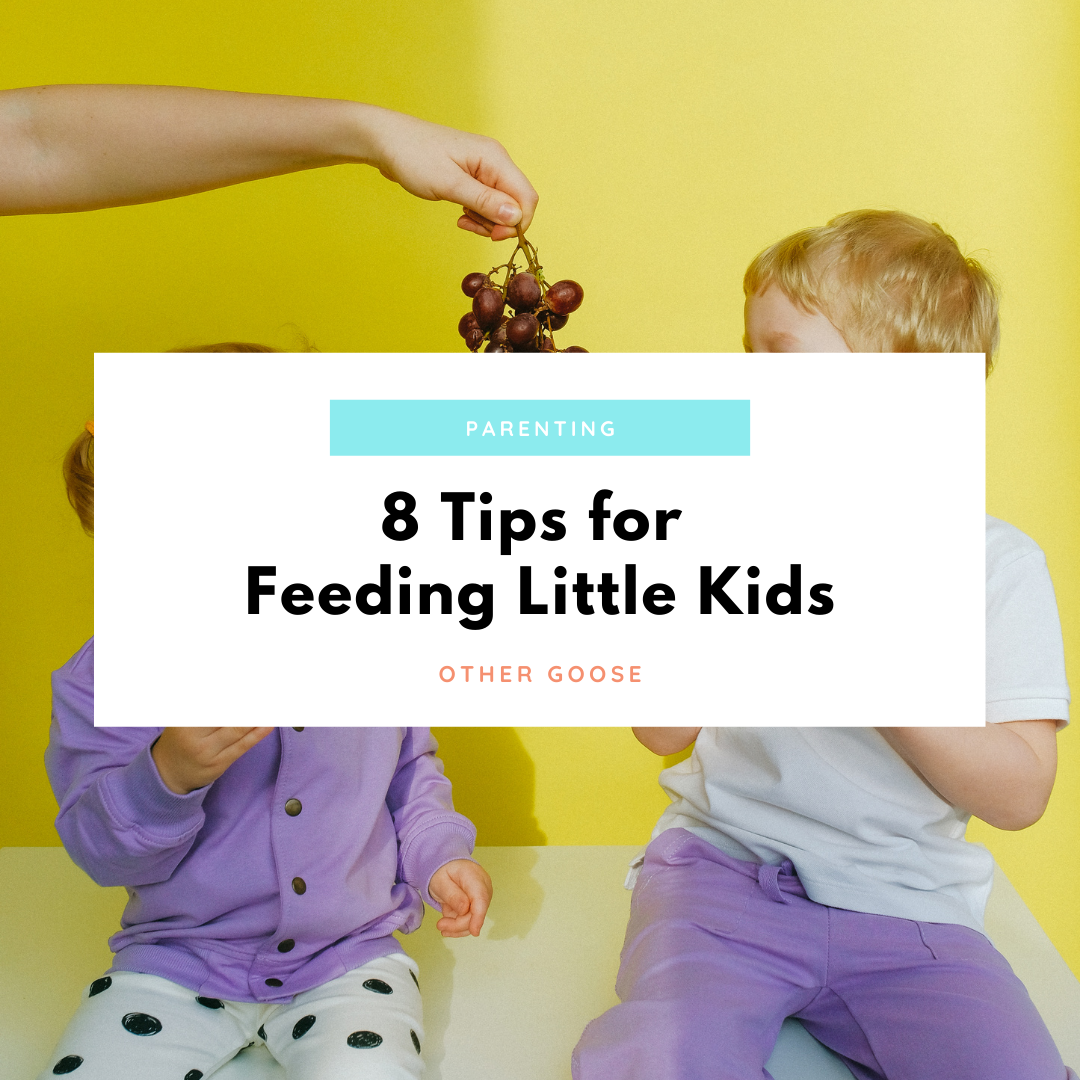
Truth time: hangry kids make for a very stressed out household. But keeping kids fed can sometimes feel like a full-time job in itself, and if you have a particularly picky eater on your hands, the task is trickier than ever. If you’ve ever doubted whether or not you’ll make it beyond the carbs-only phase and you need some fresh strategies for feeding your littles, today’s post is for you.
We enlisted the help of our guest expert, Registered Dietitian Nutritionist Kacie Barnes, to guide us in nourishing our tots day after day. Below, she shares 8 tips for feeding little kids – minus the stress. (BONUS: Scroll to the bottom for a quick cheat sheet of the many ways your child can help in the kitchen today!)
FEEDING LITTLE KIDS
- They’re not picky eaters; they’re learning about food.
Reminder: Our kids are still so young and learning every day! Just as our little ones don’t learn the alphabet the first time we sing it, they won’t learn to like all foods the first time they taste them (Except the ones that are engineered to be exceptionally delicious. We’re lookin’ at you, Goldfish crackers!). - Try an established snack routine.
Sometimes, “picky eaters” are picky because they’re snacking too often and don’t have a chance to build up their appetite between meals. Other times, they choose to eat small portions at meals, knowing they can have something “better” in a little while, and can just hold out for that. Take a look at your eating routines. Can you make some small adjustments? Most kids under 7 respond well to 3 meals and 2 snacks, with an optional 3rd snack after dinner. - Adopt a policy of variety.
Introduce, introduce, introduce. Remember: they’re still learning about food, and it’s an entirely new sensory experience with each bite. By adopting a policy of variety, you’re maintaining a mindset of experimentation. One of the best ways to do this? Hit up a salad bar from your local grocer or a nearby restaurant, and get small portions of a few items. Include foods you don’t like; everybody is different! Tofu, creamed spinach, beets — give it a go. You’d be surprised at how much more adventurous your child‘s palette might be than your own! - Give them a front-row seat.
Kids that are involved in the kitchen are proven to be more curious about food. (Pro tip: Scroll down for more ways to enlist the help of your child in the kitchen!) At the grocery, ask your child to choose the greenest broccoli. At home, ask him/her to wash it before you chop it. Talk about textures, colors, etc., as a way to familiarize your child with new and intimidating foods. - Consider timing.
If you’d like your child to get more veggies, serve them as an appetizer for dinner! Steamed or chopped with a bit of hummus or dip nearby not only staves off the crazy dinnertime hunger howling, but also guarantees they’ll fill up on the good stuff first. - Serve dessert alongside meals.
Spoiler alert: Kids don’t instinctively know that dessert is a treat unless we offer it as a reward, e.g., “If you eat all of your dinner, you can have a treat!” If your child is given a cookie or treat by a friend or family, tell him/her you’ll save it to eat with his/her next meal. Then, portion it onto the plate like you would with any other food. Watch in awe as your child slowly learns to take sugar “off the pedestal.” - Small portions.
New foods can be intimidating! Offer bite-sized portions of new foods, and serve them alongside his/her typical meals with no explanation. If it’s left untouched, no worries! With time, your child‘s curiosity will pique and they’ll give it a go. And if not, that’s OK, too! Your child will get used to the idea that food isn’t something to “make disappear” simply for the sake of the Clean Plate Club. - Relax.
Learning new foods is a lifelong process. The less we make eating into an anxiety-fueled process for both ourselves and our kids, the more likely they’ll feel freer to experiment at the dinner table. Play some music, light some candles, try a read-aloud. Make dinnertime an environment for connection, rather than an event for consumption.
READY FOR MORE?
This week, enlist your child to help you with the following tasks during meal or snack prep:
- Measure and pour dry or wet ingredients.
- Stir ingredients.
- Fill water (for pots of pasta, or for kettles of tea).
- Rinse vegetables and fruit.
- Figure out how to operate small appliances (blenders, ovens, etc.).
- Wipe down countertops.
- Pick herbs from stems.
- Tear greens into pieces.
- Set the table.
- Taste testing!
Sure, we know it can feel burdensome to invite your child into the cooking process, especially when you’ve got a small window of time available to prep a meal or snack. And yet: kitchen confidence comes from practice – both in your child and yourself! Not only is your child getting the immense benefit of forming a deeper connection to his/her food and home, but at the same time, you’re gaining valuable skills in delegation, patience, and trust. Sometimes, the most nourishing thing we can do is ask for help — even in our own kitchen.
ONE LAST TIP
When you encounter an (inevitable!) spill, simply hand your child a dish towel and say, “It’s OK! I know you know how to clean it up.” Mistakes in the kitchen are one of the best (and simplest!) ways to foster a growth mindset in our kids. With a prepared answer and trusting mindset from you, your child will gain miles of confidence along the way.
p.s. Speaking of food, have you checked out our happy fridge calendar? It’s on sale here! (Or, if you’re a member, get it FREE!)
